8 minute read
My last post showcased the female ancestors I have photographs of. Upon seeking out all the photographs of my male ancestors, I noted a distinct bias towards writing stories from my female line. I do find women’s stories perhaps more fascinating, being a female myself, so it’s time to correct the balance and commit to writing the male stories of my family.
In scouring my files for photographs, I could only come up with 13 male faces, as opposed to 16 female faces. Again, I’m sure there are more photographs out there I’m yet to discover and hopefully they will one day come to light. In the meantime, I’ll need to make a conscious effort to complete the stories for these ones I have photographs of so that the pictures have some context and meaning.
By the 1840s it was possible to have a portrait photograph taken, although few people would have photographs dating back this far. The oldest portrait in my collection of ancestor photographs would likely be Jane Woodward’s young portrait, taken around 1860. John and Nancy Duck’s studio portrait was likely taken in the decade or so after this, perhaps as early as the 1860s or as late as the mid-1870s. Then in 1871, a family group photograph was taken at a distance of the Andriske family of whom Samuel Andriske was the oldest member. This photograph is blurry and doesn’t show his face well but is still a very early example of a family recording a precious moment in time.
In a future blog I will showcase more family photographs, those of aunts, uncles, cousins, whose portraits can be used to gain an insight to what a direct ancestor may have looked like, if the direct ancestor portrait is lost to time. For now, here are the photographs of my male ancestors, and a short bio for each.
I’ve written stories for just two of the thirteen, so I’ve plenty of work ahead of me. Send coffee!
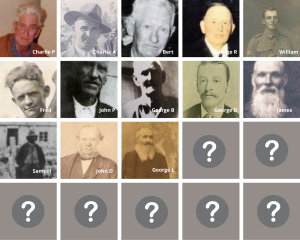
The lives of the dead are preserved in the memory of the living. Marcus Tullius Cicero
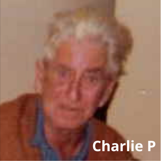
Charles ‘Charlie’ Alfred Poulter 1919-1986 (Grandfather) Pop and Poppins; a tribute to my grandfather – Quirky Characters Charlie was born in the year of the Spanish flu. He was raised in the beachside suburb of Clovelly with three sisters and three brothers. Charlie left the city for the bush during the Great Depression and made it his permanent home. He always loved returning to the beach however for a visit to family and friends. He and my grandmother Irene had seven children. Charlie died aged 66 after a lifetime of heavy drinking and smoking, robbing me of a grandfather figure when I was just a teen. I am currently researching his life before his marriage, when he worked as a labourer in the Pilliga scrub.

Charles ‘Charlie’ Ronald Andriske 1912-1996 (Grandfather) Charlie was a 14 pound baby born out of wedlock to a 16 year old mother who found a way to keep him, despite society’s tendency to look down upon those in her situation. Charlie was a hard-working teetotaller who refused to leave the small country town he grew up in. He married an English lass, my grandmother Connie. To me he was Pop Andriske who, when I saw him every few months would say, ‘How’s Dirty old Dubbo?’ I am currently researching his time in the army in QLD during WW2.
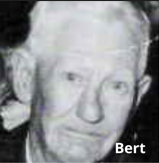
Bert John Poulter 1892-1972 (Great-Grandfather). Bert was my paternal great grandfather who grew up in Sydney’s Eastern suburbs. He had a close-knit family, a trait he instilled in his children and grandchildren. He had a cheeky fun-loving nature and loved a drink at the pub and in his younger days played cricket with a lively bunch of lads, the story of which I have under construction. Bert married Eileen and they had seven children. Bert died when I was just 3 weeks old so re-creating his life story will do much to mend our broken connection.
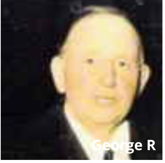
George Reidy 1892-1978 (Great-Grandfather). George was born to a mother and father who separated soon after his birth. He was raised by his mother and step-father. George made his living as a sleeper cutter and labourer, spending most of the Great Depression years in the Pilliga scrub. A bit of a loner, he left his wife Minnie during WW2 and lived alone in Sydney until his death aged 85, making infrequent visits to country NSW where his three daughters and many grandchildren lived. He was, by the account of my grandmother, a wonderful Dad.
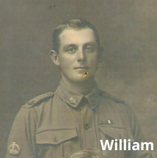
William Richard Duck 1881-1975 (Great-Grandfather). The audacious Mr Duck was a ship’s engineer, sailing between England and Australia during the early 20th century. He used this cover to take a second wife Ada before bringing his first wife Minnie to Sydney and making them live together, a truly scandalous affair which attracted condemnation in national newspapers. He ended up leaving them both and his seven children and returning to England where he fathered a son by his sister-in-law after his brother’s death on the battlefields of WW1. William later re-married and had his ninth child. He also faked being a Gallipoli war hero. His story will be a long one but worth waiting for!

Herbert Frederick ‘Fred’ Lees 1894-1974 (Great-Grandfather). Fred was a Coonamble boy, born and bred, descended from some of New South Wales’ pioneer families. Fred was a drover who fathered a child when only 17 but didn’t marry the child’s mother, Unita, although he later lived with her. Little is known of his character or his life, so uncovering this will illuminate the intertwined relationships that develop in small rural towns.

John Poulter 1855-1936 (2 x Great-Grandfather). John was born in west London and arrived in Australia aged 11. He worked as a butcher, following in the footsteps of his father and other ancestors. He married an orphan girl, Ann Jane, and they lived happily together in Bronte for many years. Their large family of nine children and many grandchildren loved gathering at their house on Sundays to play cards and enjoy sunny days at the beach.
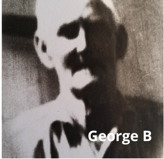
George Broadie 1876-1957 (2 x Great-Grandfather) George was raised by his grandparents in Sofala after his father died when he was 3 years old and his mother remarried. He made his living as a labourer and gold prospector. He married his second cousin Ellen and they had 10 children before she died young. George never remarried, living as a widower for 40 years in mourning for his lost love.
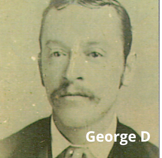
George Isanbard Drew 1847-1934 (2 x Great-Grandfather). George was born in Plymouth, England, where his family had for years been in the naval services. He and his family moved to East London when George was young and he remained there for the rest of his life. George made his living as a ship’s plumber, walking a couple of miles each way to the docks on the Thames. George married Hannah, a woman he described as an angel. When she died, he remarried a widow and they lived happily together until his death aged 87.

James Core 1846-1909 (3 x Great-Grandfather). James was the grandson of convicts. He married Mary in Braidwood but moved all over NSW, working as a hawker and hotel publican. He eventually settled in the Mudgee area where he died aged 63. James and Mary had 12 children, four of whom they lost before adulthood.

Samuel Andriske 1825-1898 (3 x Great-Grandfather). Samuel was born in a small village in Prussia, in an area which is now Poland. He arrived in Geelong in 1849 and set about making a living as a vigneron and orchardist. He was a pioneer of the German-Geelong community and Lutheran church elder. He married another Prussian immigrant, Anna Rosina and they raised 10 children together before her premature death when their youngest child was only 2. Samuel’s older children, extended family and German community members helped him raise his family. He never remarried and died aged 73.
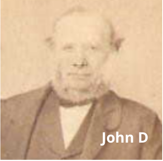
John Duck 1811-1877 (3 x Great-Grandfather). The gentleman’s messenger; a story of serendipity – Quirky Characters John was born in Yorkshire but moved to London in the 1840s. He worked as a messenger at the posh Atheneum gentleman’s club in central London. He and his wife Nancy had three sons who all prospered at a time when London was booming. Some 120 years after John’s death, I inadvertently found a place to live in the very same neighborhood in London where John and Nancy lived. This coincidence and the knowledge of the area that came from it was crucial in writing the story of John’s life as a servant to the gentleman of London.
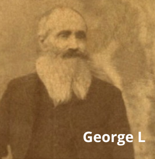
George Lawson 1819-1912 (4 x Great-Grandfather). George was born in London. It has not yet been determined who his family was as he left very little clues in the available records. He arrived in Sofala in the early 1850s, at a time when the gold rush was attracting men from far and away. He married soon after, although his first wife died, probably in childbirth. He married another young lass, Susannah, some twenty years his junior and they had twelve children together. George died in Bathurst, aged 92.
